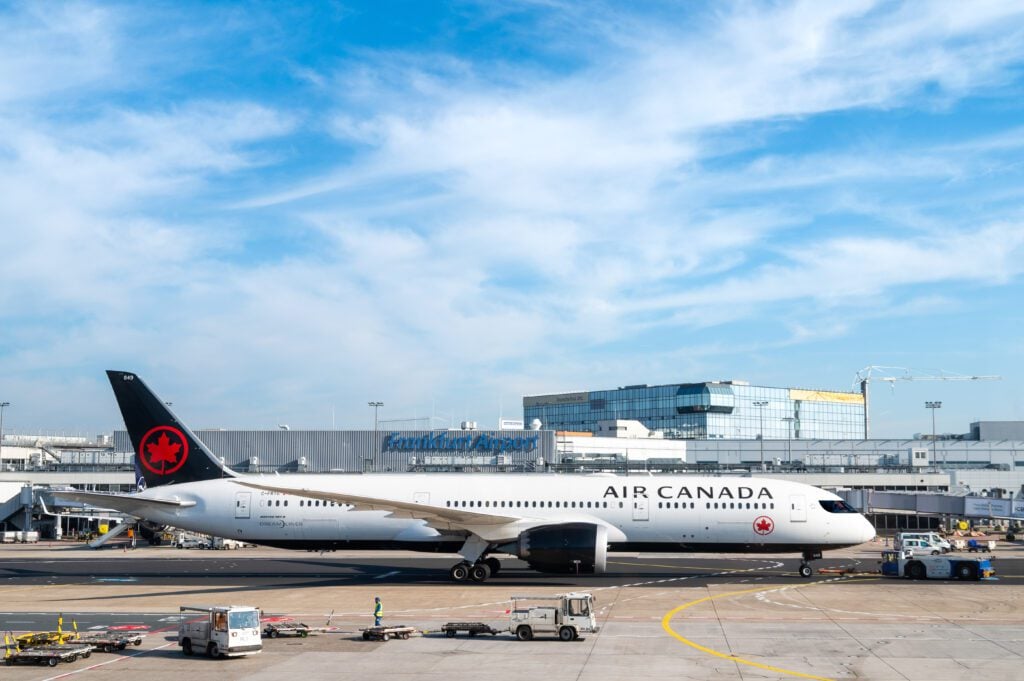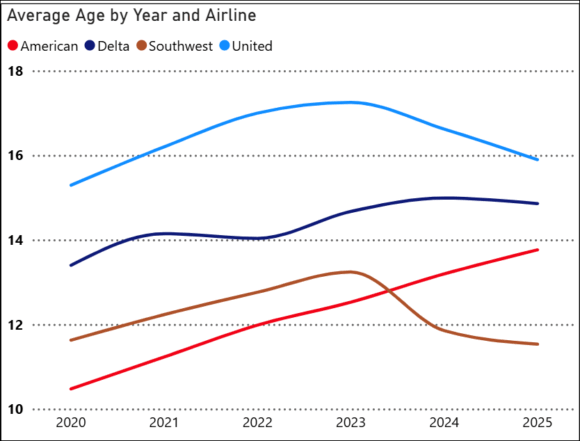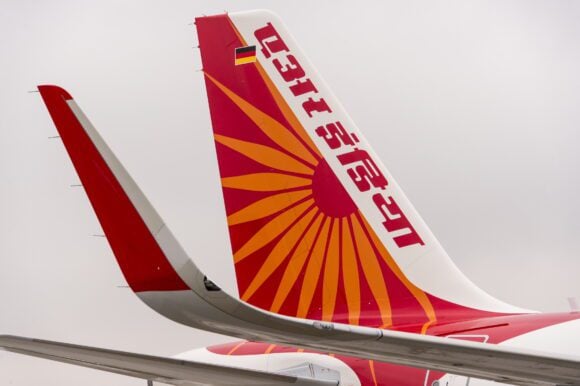
Air Canada Boeing 787 9
Air Canada has published its Q3 2025 results, confirming that its revenues declined 5% year-on-year (YoY), mainly due to its flight attendants striking during the quarter. The airline said it preemptively axed around 5% of its planned quarterly capacity during the period.
On November 4, 2025, Air Canada unveiled its latest quarterly results, which included a strike by its flight attendants represented by the Canadian Union of Public Employees (CUPE).
The Canadian carrier said that operating revenues declined 5% YoY, “reflecting the impact of the labour disruption in August,” to CA$5.7 billion ($4 billion). During the quarter, it “acted on its contingency plans and ultimately cancelled over 3,200 flights in August 2025, representing about 5% of the previously planned capacity for the entire third quarter of 2025.”
Overall, the strike’s financial impact was around CA$375 million ($265.4 million) in operating income and adjusted earnings before interest, taxes, depreciation, and amortization (EBITDA), Air Canada explained, split into three parts.
First, an estimated revenue loss of around CA$430 million ($304.3 million), second, estimated avoided costs due to fewer flights of around CA$145 million ($102.6 million), and third, which partially offset the second, CA$90 million ($63.6 million) of incremental costs associated with customer reimbursements and labour-related operating costs.
Air Canada ended the three months with a net profit of CA$264 million ($186.7 million), which is a significant drop compared to the Q3 2024 net profit of CA$2 billion ($1.4 billion), which, last year, was helped by a “favourable tax asset recognition of CA$1.1 billion ($778.2 million).
According to Michael Rousseau, the President and Chief Executive Officer (CEO) of Air Canada, the Canadian carrier’s Q3 results were “solid” after adjusting for the CUPE strike that happened during the peak summer season.
“Our financial results, after adjusting for the strike impact, met our expectations, with strength in the Atlantic market and in our premium cabins.”
However, passenger revenues grew only in the transatlantic market, with Air Canada, which suffered a three-day flight attendant strike, also bleeding revenue in the transborder market between Canada and the United States.
There, its Q3 passenger revenues contracted from CA$1 billion ($707.6 million) to CA$904 million ($639.7 million), a 17.7% YoY decline.
Rousseau said that the airline’s focus for the next 12 months will be growth preparations as it transforms its fleet with the arrival of new aircraft, including the Airbus A321XLR, and a new Air Canada Rouge offering.
“We will also continue to improve our cost structure through productivity gains, operational efficiencies, and constant cost discipline to mitigate near-term pressures.”
Air Canada should take delivery of its first A321XLR in Q1 2026, with the airline having already announced its first international A321XLR routes.
From June 17, 2026, the Canadian carrier will launch seasonal flights between Montréal-Pierre Elliott Trudeau International Airport (YUL) and Palma de Mallorca Airport (PMI), and promised to utilize the long-range single-aisle jet on flights from YUL to Edinburgh Airport (EDI), Dublin Airport (DUB), and Toulouse Blagnac Airport (TLS).
Views: 1



